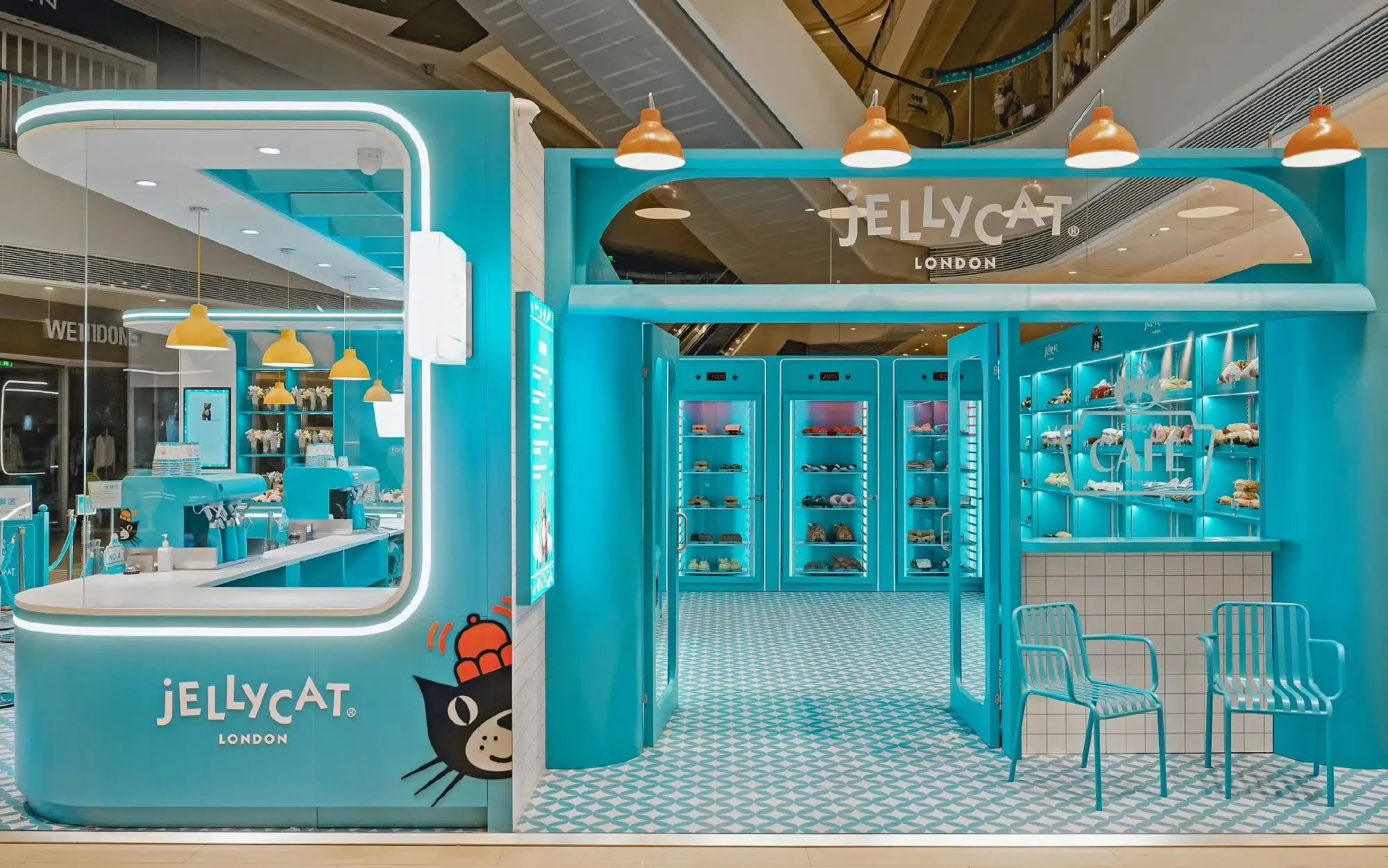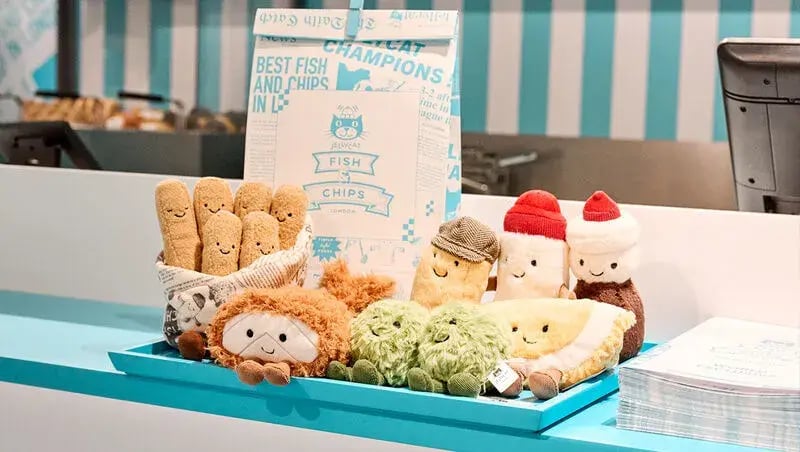Jellycat, the luxury plush toy brand, reported an impressive revenue growth of 37%, reaching £200 million by the end of 2023. This growth was driven by strong performance in their key markets, including Europe, North America, and Asia, along with a booming online presence. The company's pre-tax profits also grew by 24%, hitting £67 million. To better manage distribution and scale their operations, Jellycat replaced independent sales agents with an in-house team, enhancing control over its expanding global market.
Jellycat has always centered its brand around emotional resonance. From the outset, its plush toys were crafted to evoke feelings of comfort, warmth, and a sense of nostalgia or childlike joy. This deep emotional bond with consumers has been key to the brand's enduring popularity and appeal over the years.
Experiential Retail Marketing Strategy
Jellycat's 2024 experiential retail strategy centers around creating immersive, interactive customer experiences. One notable initiative is the launch of the “Jellycat Diner,” a playful pop-up that merges their whimsical plush toys with an engaging dining concept. This approach attracted significant in-store traffic and was amplified by organic social media sharing, strengthening both the physical and digital presence of the brand.

4 Key Strategies Behind Jellycat’s Success
-
Anthropomorphism and Character Creation: One of Jellycat's core strategies is giving their plush toys personality through anthropomorphism. Their products—like pretzels, coffee, croissants and more plush toys with eyes and a mouth—blend everyday objects with a playful touch. The brand extends this approach by creating Instagram shorts that bring each plush character to life, building strong emotional connections with customers.
-
Tapping into the Solo Economy: As more adults live alone, Jellycat has embraced the solo economy, marketing their plush toys as companions that offer comfort and connection. No longer just for children, these toys appeal to adults seeking emotional comfort at home.
-
Repositioning Toward Adults: Originally focused on children, Jellycat has shifted its brand positioning to appeal to adults as well. The plush toys are now seen as decorative and collectible items, with their designs resonating with both younger and older generations. This broadens their market appeal, making Jellycat a lifestyle brand that transcends age.
-
Experiential Marketing: Jellycat's innovative experiential marketing strategy includes the launch of the Jellycat Cafeteria and Fish & Chips — an immersive shopping experience where the entire sales process mimics the preparation and delivery of a meal. Customers "order" their plush toys like they would order food and the experience is completed with whimsical interactions. This concept went viral on social media, creating a FOMO (fear of missing out) effect that even captivated celebrities, further boosting the brand’s popularity.

5 Tips for Retail Brands to Leverage Experiential Marketing
-
Create Memorable In-Store Experiences: Engaging customers with interactive setups builds emotional connections with your brand.
-
Amplify Through Social Media: Encourage customers to share their experiences on social platforms, increasing your digital reach.
-
Blend Digital with Physical: Integrate digital elements like mobile apps or augmented reality to complement in-store experiences.
-
Adapt to Local Markets: Customise experiential marketing efforts to fit local tastes and preferences for better resonance.
-
Build Long-Term Engagement: Focus on crafting experiences that foster long-term loyalty and repeat visits, not just one-time interactions.
About Jellycat
Founded in 1999, Jellycat is a London-based plush toy brand known for its quirky and luxurious designs. Initially targeting children, the company has since expanded its appeal to adults. However, early challenges in scaling operations and managing global distribution slowed their growth. By focusing on high-quality designs and brand consistency, Jellycat overcame these obstacles, becoming a global favourite.

References:
Jellycat Enjoys a Marketing Win in China, with Help from (G)I-DLE
How Jellycat Plushies Became a Gen Z Obsession
Jellycat’s pop-up Shanghai café sparks buzz
Jellycat Opens The Doors On A New CAFÉ Pop-Up In Shanghai
The Rise Of Onomatoplay Retail: How Bringing Play To Life Is A Winner
Jellycat plans £58mn payday for owners
Jellycat’s Comeback: A Case Study in User-Centric Design and Emotional Connection
Jellycat Goes From Strength To Strength
5 Experiential Trends Every Brand Marketer Must Know For 2024
Jellycat